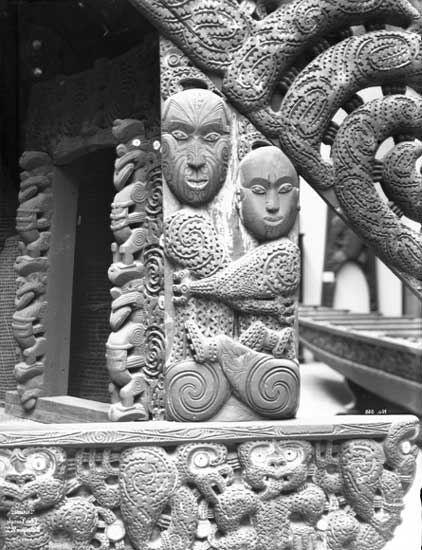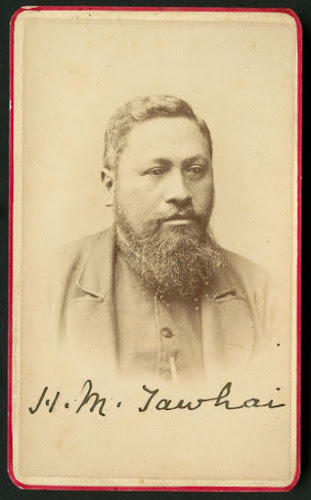Terra Nullius New Zealand-style? The Curious Case of Tiritiri Matangi Island
Tiritiri
Matangi is a 543-acre island that is today a wildlife sanctuary. Located
in the Hauraki Gulf, just a few kilometres from the Whangaparaoa Peninsula, the
island is a popular destination for daytrippers taking the ferry from Auckland.
Besides abundant wildlife (including kiwi, kokako and takahe), the island also
boasts New Zealand’s oldest working lighthouse (constructed in 1864).
 |
| Tiritiri Matangi Lighthouse |
The island
was also the focus of a baffling and quite extraordinary Native Land Court
decision in 1866, when the Māori claimants found themselves ranged against the
Crown, which claimed the island on the basis of an 1841 deed of purchase.
Although the court quite rightly rejected this claim (since the deed made no
reference to the island), it nevertheless awarded the island to the Crown. That
was despite declaring that it was ‘unable to discover the origins of the Crown’s
title, or by what means the native title has been extinguished’.
It did so,
according to the judgment, because it found the Māori claim to the island
insufficiently strong to eject the Crown from its possession of Tiritiri
Matangi Island. And so, as Richard Boast has pointed out, the court appears to
have relied on the English common law rules regarding possession in reaching
this conclusion (in itself revealing, given the court was supposed to determine
ownership ‘according to Native custom’). The Crown had already constructed the
lighthouse and in the court’s view this gave the Crown possession.
 |
| Francis Dart Fenton, first Chief Judge of the Native Land Court, PAColl-7489-01, ATL |
That
decision ignored a great deal of Māori testimony regarding their own use of the
island. Although no longer permanently occupied by the mid-nineteenth century,
multiple witnesses told the court that they regularly visited Tiritiri Matangi
to collect kaimoana and fish or to hunt pigs. Chief Judge Fenton’s assertion
that this constituted a weak claim to ownership of the island – that Māori did
not really occupy or utilise Tiritiri Matangi – did not reflect customary Māori
law.
Instead, I
would argue that the court’s Tiritiri Matangi judgment was influenced by the
doctrine of terra nullius (literally,
‘nobody’s land’) that held that seasonal fishing or hunting was not consistent
with European forms of ownership. Tiritiri Matangi was deemed to be vacant land
because Māori did not expend capital and labour on the island to a sufficient
extent to be recognised as owners. Building a lighthouse was considered
evidence of occupation. Collecting shellfish was not.
 |
| Tiritiri Matangi Island |
New
Zealanders tend to assume that terra
nullius was a legal doctrine applied in respect of Australia but having no
bearing on our own history. But there are other examples where the influence of
such ideas can be seen, including the Crown’s willingness to proclaim British sovereignty
over the South Island in May 1840 by right of discovery, despite knowing full
well that Māori occupied the island (the island was subsequently claimed by
right of cession when Thomas Bunbury obtained the signatures of a number of South
Island chiefs to the Treaty of Waitangi).
That was
reflected further in the derisory prices and reserves awarded Ngāi Tahu in the
series of Crown purchases that followed. Although Ngāi Tahu ownership was
nominally recognised, a common assumption was that they too small in number and
too ‘uncivilised’ to have anything more than a weak claim to the land.
In the case
of Tiritiri Matangi, the court rejected Māori claims outright, refusing to
recognise customary Māori ownership or occupation of the island. I wonder just
how many of the estimated 20,000 plus annual visitors to the island are aware
of this more troubling history of the legalised land grab that saw it handed
over to the Crown.
Postscript:
There is more to this story, including subsequent Māori petitions and
complaints over the court’s judgment. I discuss the Tiritiri Matangi case at
length in Beyond the Imperial Frontier:The Contest for Colonial New Zealand (2104), from which the short summary
above is drawn.



One of the two Pākehā 'lessees' of Tiritirimātangi in 1854 was Duncan Campbell, the half-brother of my great great grandfather James Campbell, who arrived in Auckland in 1855. Duncan had arrived in Auckland in 1841, and married there in 1852. He styled himself as a 'master mariner', and certainly was master of coastal trading ships in the 1850s, but was mostly farming at Whangaparaoa with James after 1855, before both families headed to the Otago goldfields in 1862.
ReplyDeleteThank you for this post, as a Maori Researcher from Rotorua, I began research about Frances D Fenton of English desent who came from Australia as a compiler of the 1st NZ Census 1830 onwards collecting population data to enforce Depopulation plan for Maori, next HE Scribed Te Tiriti o Waitangi up north in a strategy, then as Judicator Judge he enforced Land Confiscation Acts for central north Island raiding Maori settlements. Research completed by RangiMarie aka Lady Justice of Te Arawa.
ReplyDelete